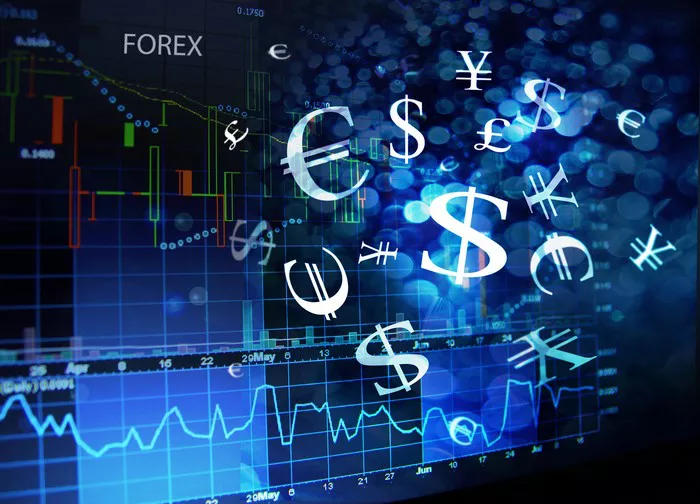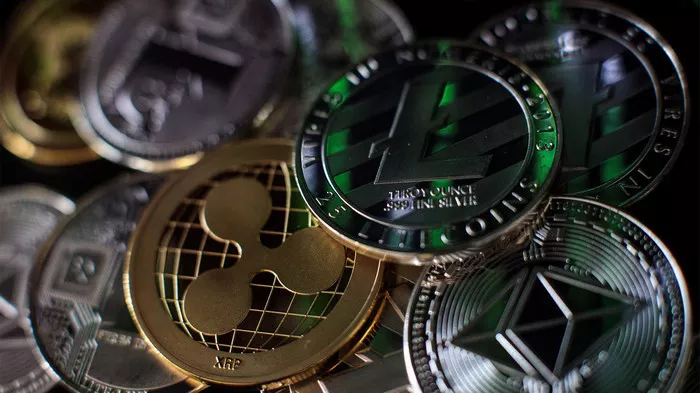The United Arab Emirates (UAE) dirham, abbreviated as AED (Arab Emirates Dirham), is one of the most stable currencies in the world. One reason for its stability is that it is pegged to the U.S. dollar (USD). This means that the value of the UAE dirham is tied to the U.S. dollar at a fixed exchange rate. The peg plays a crucial role in the country’s economy, affecting its trade, inflation, and monetary policy. But why did the UAE decide to peg its currency to the USD? In this article, we will explore the history, benefits, risks, and reasons behind the UAE’s decision to peg its currency to the USD, and how this decision has shaped the country’s economic landscape.
Understanding Currency Pegging
Before we delve into the specifics of the UAE’s currency peg, it’s important to understand the concept of currency pegging.
What Is a Currency Peg?
A currency peg is a policy in which a country’s central bank maintains its currency’s value at a fixed exchange rate to another major currency, often a stable and widely used currency like the U.S. dollar or the euro. The central bank achieves this by buying or selling its currency in the foreign exchange market to keep its value in line with the peg.
For example, if a country decides to peg its currency to the U.S. dollar at a fixed rate, the value of the local currency will move in line with the U.S. dollar’s value. If the value of the dollar increases, so will the value of the pegged currency, and if the dollar decreases in value, the pegged currency will decrease as well.
How Is the Peg Maintained?
To maintain the peg, the central bank of the country must hold significant reserves of the currency to which it is pegged. In the case of the UAE, the central bank must hold substantial amounts of U.S. dollars in its foreign exchange reserves. This enables the central bank to buy or sell U.S. dollars when necessary to maintain the value of the dirham.
The UAE dirham is currently pegged at 3.6725 AED to 1 USD, a fixed rate that has been in place since 1997.
The History of the UAE Currency Peg
To understand why the UAE chose to peg its currency to the U.S. dollar, it’s helpful to look at the history of the country’s monetary policy and the development of its economy.
Early Monetary Policy in the UAE
In the early years after the formation of the UAE in 1971, the country’s monetary policy was somewhat fragmented. At the time, the seven emirates that make up the UAE operated independently in terms of their currencies, with some using the Gulf rupee or other forms of currency.
In 1973, the UAE established the UAE dirham as its official currency, and the UAE Central Bank was founded to regulate the country’s monetary policy. However, the dirham was not initially pegged to any foreign currency. Instead, it was initially backed by gold.
The Transition to the U.S. Dollar Peg
In the 1980s, the UAE’s economy underwent significant changes, primarily due to the rapid growth of the oil industry. With oil revenues becoming the backbone of the economy, the UAE faced challenges related to exchange rate volatility and inflation. This volatility posed risks to trade and investment, particularly for businesses that engaged in international transactions.
As the oil trade was conducted globally, the U.S. dollar became the dominant global reserve currency, especially in the Middle East. The United States’ role in global trade and finance was undeniable, and many countries, especially those in the oil-exporting regions, began to see the benefits of aligning their currencies with the U.S. dollar.
The UAE government recognized that pegging its currency to the U.S. dollar would help stabilize the economy, particularly in terms of trade and foreign investment. As a result, in 1997, the UAE officially pegged the dirham to the U.S. dollar at a fixed exchange rate of 3.6725 AED to 1 USD. This decision was driven by a combination of factors related to economic stability, inflation control, and the desire to maintain a stable trading environment.
Reasons for Pegging the UAE Dirham to the U.S. Dollar
Now that we understand the historical context, let’s explore the specific reasons why the UAE chose to peg its currency to the U.S. dollar.
1. Stability and Confidence in the U.S. Dollar
The U.S. dollar has long been considered the world’s reserve currency. Its stability and widespread use in international trade have made it a safe haven for many countries. By pegging the UAE dirham to the U.S. dollar, the UAE aimed to ensure the stability of its own currency and economy.
The dollar’s value is less likely to experience sharp fluctuations compared to smaller, less liquid currencies. By maintaining a fixed exchange rate with the dollar, the UAE has minimized the risks of currency volatility and ensured that the dirham remains stable in the eyes of foreign investors, businesses, and trade partners.
2. Promoting Trade and Investment
The UAE is a major global trading hub, particularly for oil exports. Since oil transactions are priced in U.S. dollars, pegging the UAE dirham to the dollar ensures that exchange rate fluctuations do not create unnecessary barriers to trade. By linking the dirham to the dollar, businesses in the UAE can conduct transactions more smoothly, reducing the risks associated with currency fluctuations.
Additionally, foreign investors are more likely to invest in a country with a stable currency. The peg to the U.S. dollar provides confidence to investors, ensuring that their returns are not diminished by unpredictable exchange rate movements. This stability has played a key role in attracting international capital to the UAE, which has seen rapid growth in sectors such as real estate, tourism, and financial services.
3. Controlling Inflation
Inflation can be a major challenge for any economy. In the 1980s and early 1990s, many countries in the Middle East faced significant inflationary pressures due to fluctuations in oil prices and other global factors. By pegging the dirham to the U.S. dollar, the UAE was able to import the monetary policies of the U.S. Federal Reserve, which provided a stabilizing effect on prices within the country.
The peg limits the ability of the UAE’s central bank to manipulate interest rates independently, but this is not necessarily a disadvantage. The stability provided by the dollar peg helps keep inflation in check, as the central bank’s monetary policy is tightly aligned with the global economic environment.
4. Strengthening the Banking System
A fixed exchange rate system also promotes a stronger and more reliable banking system. In the case of the UAE, the peg to the U.S. dollar has encouraged the growth of a well-developed financial sector. The stability of the dirham enhances the credibility of the UAE’s financial institutions and fosters trust among customers and international partners.
Moreover, with the U.S. dollar being a widely used reserve currency, the UAE’s foreign exchange reserves can be held in USD, reducing the risks associated with currency mismatches in its reserves.
5. Boosting Tourism and Economic Diversification
Tourism is one of the fastest-growing sectors in the UAE economy, particularly in cities like Dubai and Abu Dhabi. Tourists from all over the world, especially those from the U.S. and Europe, are attracted to the UAE for its luxury shopping, cultural experiences, and modern infrastructure. The peg to the U.S. dollar makes it easier for American tourists to visit the UAE without worrying about fluctuating exchange rates.
Additionally, the UAE has been actively diversifying its economy beyond oil by investing in sectors such as technology, aviation, and hospitality. The stability of the dirham plays a vital role in supporting this diversification, as businesses in these sectors can operate in a predictable financial environment.
Benefits of the Pegged System
The decision to peg the UAE dirham to the U.S. dollar has provided a number of benefits to the country’s economy:
1. Exchange Rate Stability
One of the most obvious benefits of the peg is the stability it provides in the foreign exchange market. Since the exchange rate is fixed, businesses and individuals can plan with confidence, knowing that the dirham’s value will not fluctuate unpredictably in relation to the dollar.
2. Low Inflation
By importing the U.S. Federal Reserve’s monetary policy, the UAE can keep inflation rates relatively low. The stability of the dollar also helps to keep prices in check, which benefits consumers and businesses alike.
3. Economic Growth and Development
The peg has contributed to the UAE’s rapid economic growth and development. It has helped attract foreign investment and made the country an attractive destination for international trade. The UAE’s economy is now one of the most diversified in the Middle East, with significant contributions from industries such as tourism, real estate, and finance.
4. Access to Global Financial Markets
The peg to the U.S. dollar has enhanced the UAE’s access to global financial markets. The stability and liquidity of the U.S. dollar make it easier for the UAE to engage in international transactions, whether in oil exports or investments in global financial markets.
Risks of the Pegged System
While the peg to the U.S. dollar has provided numerous benefits, it is not without risks:
1. Dependency on U.S. Monetary Policy
By pegging the dirham to the U.S. dollar, the UAE’s monetary policy becomes closely tied to the policies of the U.S. Federal Reserve. This means that the UAE has limited control over its own interest rates and monetary policy. If the U.S. raises interest rates, the UAE may have to follow suit, even if local economic conditions do not justify such a move.
2. Vulnerability to Global Shocks
The UAE’s economy can become vulnerable to global economic shocks, particularly those originating in the U.S. Since the dirham’s value is tied to the U.S. dollar, any economic downturn or financial crisis in the U.S. can have ripple effects on the UAE economy.
3. Pressure on Foreign Exchange Reserves
To maintain the peg, the UAE central bank must hold substantial foreign exchange reserves, primarily in U.S. dollars. This puts pressure on the central bank to manage its reserves effectively, especially in times of economic uncertainty or volatility in the global markets.
Conclusion
The decision to peg the UAE dirham to the U.S. dollar was a strategic move aimed at stabilizing the country’s economy, promoting trade and investment, and ensuring long-term economic growth. While the peg has brought many benefits, such as currency stability, low inflation, and improved access to global financial markets, it also carries certain risks, including dependency on U.S. monetary policy and vulnerability to global economic shocks.
Overall, the peg to the U.S. dollar has been a successful policy for the UAE, providing the stability and confidence necessary for the country to become one of the most dynamic economies in the Middle East.
Related topics:

































